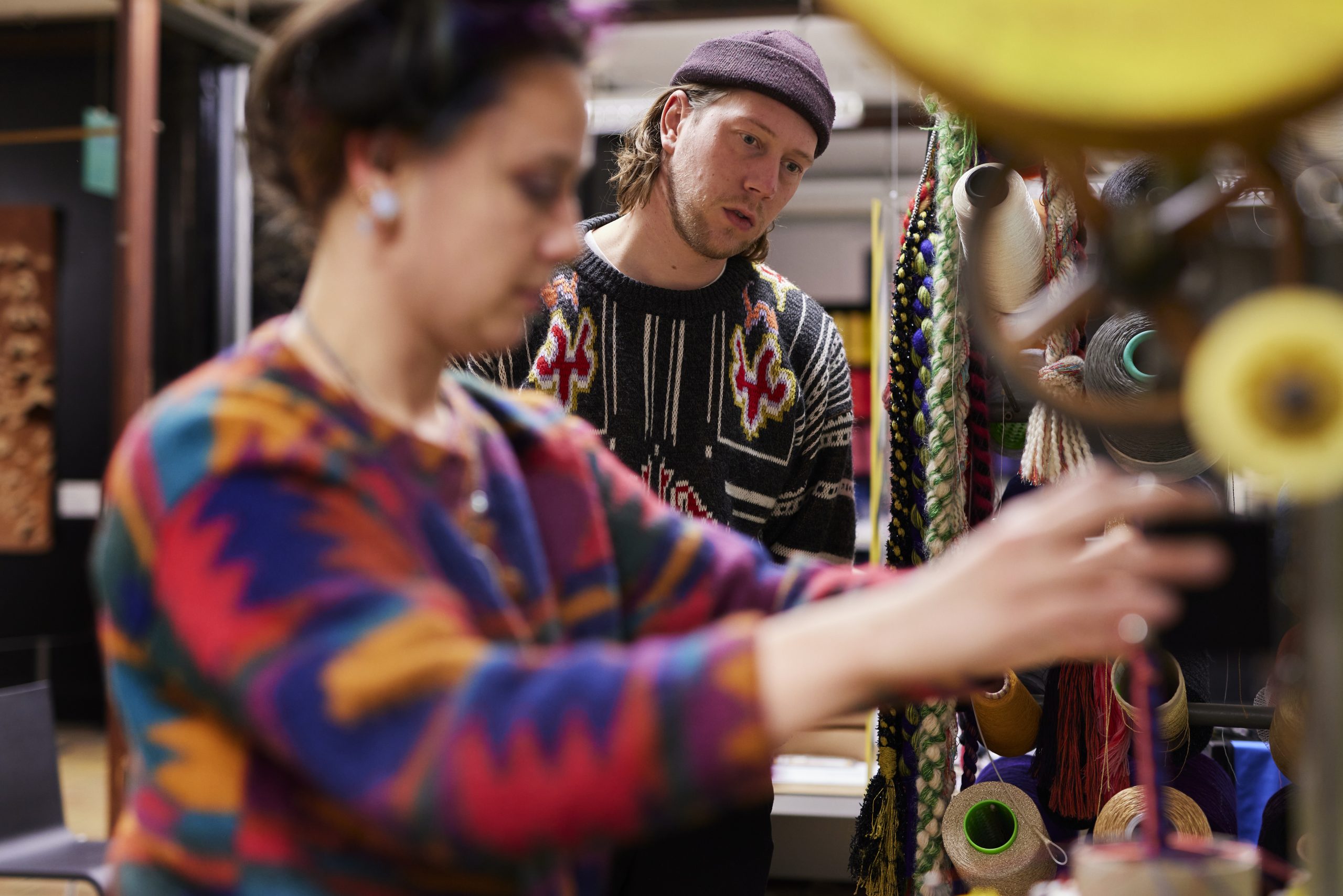How can we get more out of the machines used in the textile industry? With the intention of bringing new ideas to the textile industry, designer collective Envisions and the TextielLab got together to experiment. Their Archive of the Future makes suggestions for innovations in production lines.
“We always dreamed of having the TextielLab and their technical experts all to ourselves one day,” says Sanne Schuurman, art director and founder of designer collective Envisions. The 22 multidisciplinary ‘envisionaires’ who are affiliated with Envisions investigate the innovation possibilities within existing production processes of the industry; they do not focus on the end product but on the process. Together with the TextielLab, they developed the Archive of the Future, which can now be seen in the exhibition Secrets of Making.
Getting more out machines
Four co-creative teams, formed by a designer from Envisions and a product developer from the TextielLab, were given free rein for research and experimentation and the time and space to explore their own and each other’s fascinations. In doing so, they draw on the museum archives, the Sample Studio and the knowledge of curators and technical experts in the lab. The aim: to develop new techniques with old crafts. “The manufacturing industry, which is very much focused on consumers, produces what people are familiar with and what fits within the fixed production lines,” says Schuurman. The co-creation project with the TextielLab reveals how, if you take the time for it, you can push the boundaries of the machines. This means that the industry can do more with what they already have. “The power of designers to make that visual is an important key in this project,” says Schuurman. “By depicting innovation in an accessible way, literally showing the adapted process, we can make faster steps together.”

Photo: Tommy de Lange
“By depicting innovation in an accessible way, literally showing the adapted process, we can make faster steps together.”
Textile building blocks
The Archive of the Future shares its research results with anyone interested. A selection of the work is on display at the expo: new combinations of technical functionality and aesthetic value. The samples reveal the untapped potential of textiles in this field. They are not ready-made products but samples of ideas with lots of potential for makers: imaginative knits, which bend and fold themselves into a spatial object due to the application of various materials and knitting stitches; fabrics that change into whimsical 3D structures through an ingenious binding pattern; gracefully embroidered grids that can enclose a power network; braided constructive connections that do not require glue or screws.
An outdated image
Product developer Veva van der Wolf created this technical tour de force with designer Tijs Gilden on the hundred-year-old braiding machine in the passementerie department. “Working together in this way is very different to working for someone,” says Van der Wolf. “In a previous project in the lab, Tijs was already fascinated by the braiding machine; we wondered what else it could do. Cord braiding is a very old, classic technique with a rather outdated image. I want to put it on the map in a contemporary way- to make an innovative product with such an old machine to inspire the industry.” The process started with a technical study, with samples previously made by Van der Wolf himself. The pair also drew inspiration from work in the museum collection such as the cord braiding experiments that Bart Hess made on the same machine for his moving work STIMULUS: Cord Reflexes, which is also displayed in the exhibition. It shows how an idea can transform into something new.

Veva van der Wolf & Tijs Gilde working on the braiding machine. Photo: Tommy de Lange
Stool
“Until now, I was usually very decorative when working with passement,” says Van der Wolf, “but now it has suddenly become constructive as well. We have used passement to make a load-bearing connection.” They took up the challenge of braiding wood – instead of a traditional lace or curtain cord. “In order to get those beams into the machine, we had to disassemble machine parts.” Next, they had to connect the beams with each other by braiding so that it would be sturdy enough for a piece of furniture and so that wood wouldn’t be visible. They also had to create an aesthetically pleasing design in the wickerwork. By steering the bobbins manually during the braiding, it was possible to create a changeant effect. The interim tests are recorded in the TextielLab’s work archives, to serve as input for the next makers who will set to work with the people and machines there. You can view the most complete result, the beginnings of a stool, on the stage of Secrets of Making.
Scaling up
Meanwhile, the development continues; Schuurman mentioned the chair and cupboard Gilde wants to create next. They will take the samples from the Archive of the Future to their network when the opportunity arises. “Maybe Stoll will adapt their machines when they see these possibilities. But this may also be interesting input for Borre Akkersdijk’s lab.” They have also planned a symposium for professionals from the textile industry. “These tests are our end products; we would like the industry to take up the scaling up to concrete applications.”